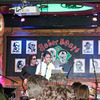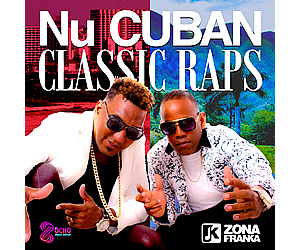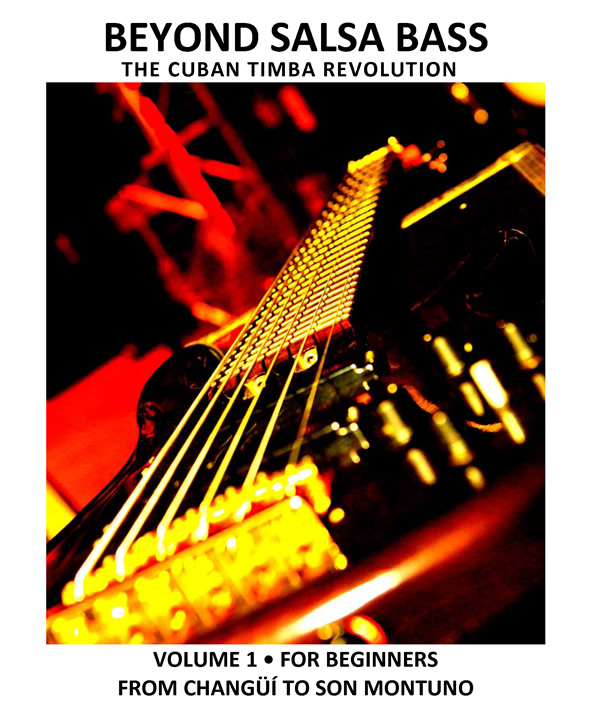Archivo
Lo Nuevo[hide]
Reportes: From The St... : Jazz Plaza ...
Fotos: Tom Ehrlich : Irakere 50th Annivers...
Fotos: Tom Ehrlich : Irakere
Resenas: Joey Altruda Presents: El Gran ...
Reportes: From The St... : Cubadisco 2...
Timbapedia: 09. Interviews -... : Carlos del Pino ...
Fotos: Tom Ehrlich : 2023 Monterey Jazz Fe...
Fotos: Tom Ehrlich : 2023 Monterey Jazz Fe...
Fotos: Tom Ehrlich : 2023 Monterey Jazz Fe...
Fotos: Tom Ehrlich : 2023 Monterey Jazz Fe...
Grupos: Tirso Duarte
Grupos: Tirso Duarte : Discography
Grupos: Charanga Habaner... : 8. El bla bla bla
Grupos: Pupy y los que S... : Tirso Duarte
Fotos Del Día [hide]
Pa' Ponerte en Talla
BEYOND SALSA BASS VOL.1 RELEASED!!
El primer volumen para el bajo de la serie de libros "BEYOND SALSA"
The first bass book in the BEYOND SALSA series of Afro-Cuban musical instruction methods, Beyond Salsa Bass Volume 1 (For Beginners) includes bass tumbaos for each of the piano tumbaos (aka, montunos) in Beyond Salsa Piano, Vol. 1, and contains many additional bass tumbaos plus other exercises, making this first bass volume is more than twice as long (compared to Beyond Salsa Pianio Vol.1). The book begins by categorizing the most common Latin bass tumbaos by their rhythms and then proceeds to tell the history of Latin music from a bassist’s perspective, with notation for bass tumbaos from each era covered: changüí, rumba, son, danzón, big band and son montuno (a detailed study of Arsenio Rodríguez). This is the first book in the new standard for contemporary Latin bass styles. 186 pages (186 páginas) with 212 audio tracks (212 pistas).
Click here to download the FREE sample pdf
Click here to download FREE introductory bass audio samples
Click here to visit Kevin's Beyond Salsa Bass Vol.1 hard copy book page
The Audio product includes a fast and slow file for each bass tumbao in the book as well as various example files corresponding to the text. Note that for every piano tumbao in our sister volume, Beyond Salsa Piano, Vol.1, there is a corresponding bass tumbao in the Beyond Salsa Bass, Vol. 1 book and audio product. In these cases, the piano audio is included in one channel. In other cases, the audio consists of just bass and clave. If this seems confusing, think of it this way: Beyond Salsa Piano Vol. 1 is a subset of Beyond Salsa Bass, Vol. 1. The bass book has a bass tumbao for every piano tumbao in the piano book, but the bass book also has many more additional tumbaos for tracks not covered in the piano volume.
For more info on the BEYOND SALSA series ploease visit = http://beyondsalsa.info
INTRODUCTION TO BEYOND SALSA BASS -- The primary job of the bassist in Latin popular music is to play a repeating figure that establishes both a chord progression and a rhythmic groove. We call these figures tumbaos. A tumbao is repeated – sometimes with variations – for a fixed or open‐ended period of time, after which a transition leads to another such tumbao, and so on. Bass tumbaos are used sparingly (if at all) during the opening section of an arrangement (aka, the cuerpo, or canto) in which the lead vocalist sings a popular song, itself divided into subsections of four to eight claves in length.1 The bass tumbaos come in during the second major section, (the montuno section), comprised of call and response vocals (coros), instrumental solos played over a repeated bass tumbao, and, beginning in the 1940s, sections featuring instrumental riffs (mambos). In the earliest years of son and danzón there was no montuno section at all, but over time, the montuno section has grown longer and longer. Today, the cuerpo comprises only a small percentage of the overall length of an arrangement, especially in concert.
If you’re a professional bassist in another genre seeking to get up to speed on Latin music, you’ll have no problem working through this book as it’s written – in chronological order. If you’re a true beginner, on the other hand, you’ll find that the difficulty level varies. The first chapter is very easy, as are Chapter 4 on jazzband (aka, big band) bass tumbaos and Chapter 5 on son. Some of the danzón and son montuno tumbaos are just as easy, but others are quite challenging, so feel free to skip around. If you hit a tumbao that’s too hard for you, don’t assume that the rest of the book will be equally difficult. There are extremely easy tumbaos in every section, even in the later volumes. My advice is always to start with the “lowest‐hanging fruit”.
This volume’s introductory technical chapter categorizes the simplest and most common bass tumbaos of Latin music: those that repeat their rhythm after only two main beats.
The use of familiar names for these tumbaos (bolero, habanera, guaracha, tresillo, bombo‐ponche, etc.) is strictly optional. Some are common, some are rare, and some are coined for this book.1 I love using names because it helps me to remember the patterns and gives them personalities that help me to “get on a first name basis” with them. If this idea doesn't appeal to you, or to your teacher, just ignore the names and use the numbers instead.
Remember that terminology of all types is unimportant except as a way to communicate with others – and it’s always easier to learn someone else’s system of terminology (about which he or she may feel very strongly!) than it is to get the other person to use your system. The silver lining is that the more ways you think about these patterns – and the more names you learn for them – the more you’ll internalize them, so if a new teacher or band member introduces you to a new set of terms, learn them enthusiastically. You’ll then have one more set of “handles” to solidify them in your memory. For example, the ubiquitous pattern we call anticipated tresillo is also alternately called “king‐kong”, “bombo‐ponche”, “the ‘and’ of 2 and 4” “the ‘a’ of 1 and the ‘and’ of 2”, “tumbao”, and various other names. Learn them all, and use the one that works best in each situation. Above all, learn to play the pattern and recognize it when you hear it.
Many master musicians never think or talk about any of this, but they all have an infallible feeling for which pattern goes where. The idea is to internalize that infallible feeling for yourself by whatever means works best for your personal learning style.






















